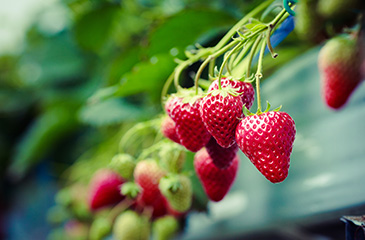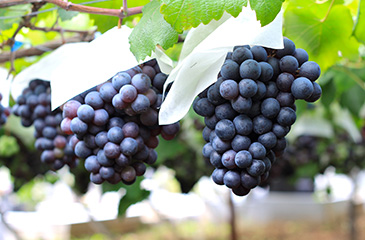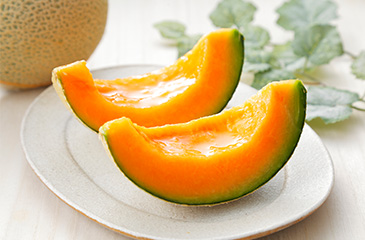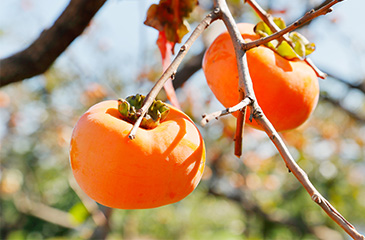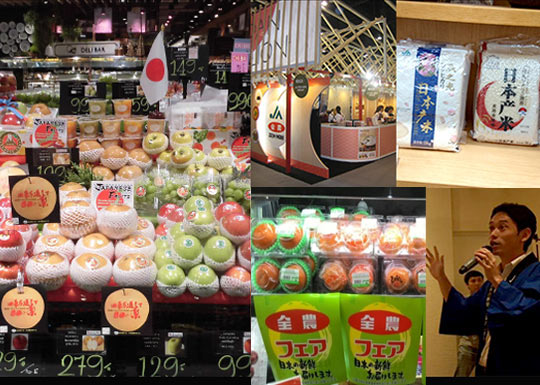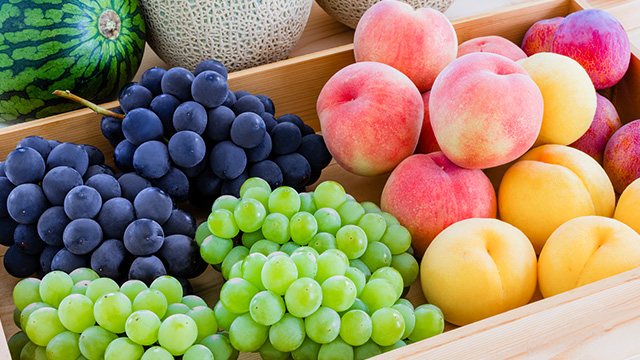
The Highest Standards of Both Safety and Quality
The narrow Japanese archipelago spans a long distance from north to south. Combined with the influence of ocean currents, this means that Japan is blessed with four distinct seasons and a humid climate, so a rich array of fruit and vegetables can be cultivated in each season. Fruit and vegetables suited to local conditions are cultivated in each part of Japan, from warm regions to cold ones, and from the mountains to the plains. This enables us to supply Japanese dining tables with an abundant variety of products throughout the year.
The high quality of Japan’s fruit and vegetables can be attributed to the creative approaches devised by producers and the painstaking work that they carry out by hand. Fruit growers pick off much of the fruit from their trees at an early stage, leaving only the very best to ripen and benefit from their meticulous care.
Japan’s Rich Array of Seasonal Fruit and Vegetables
-
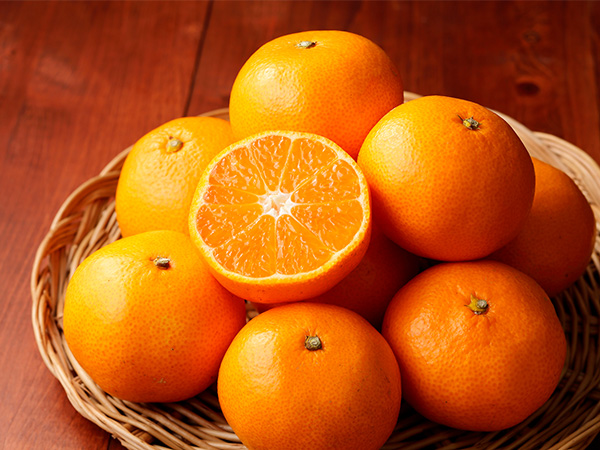
- Mandarin Oranges
- Mandarin oranges are Japan’s most popular fruit. A basket piled high with these vivid orange citrus fruits is a common sight on dining tables in most Japanese homes. Each segment is covered with a thin skin that prevents your hands from getting covered in juice, so you can easily eat mandarin oranges without using a knife.
-
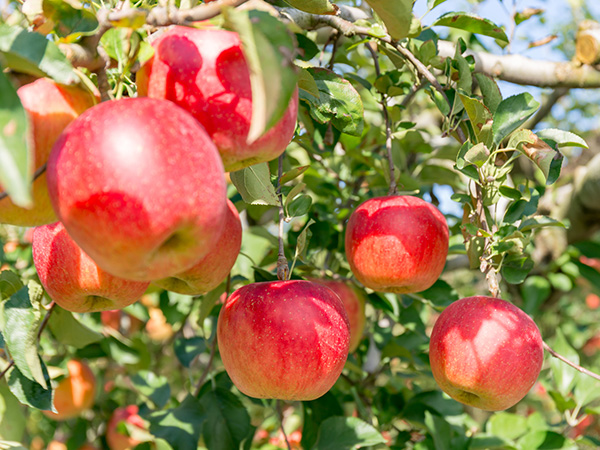
- Apples
- Among the many different varieties of Japanese apple are Fuji, Orin, Mutsu, Sekaiichi, and Kinsei. Deep crimson, yellow-green, striped.... Their richness of color is rivaled only by their exquisite flavor and aroma. Some specimens are almost a kilogram in weight. Each variety has its own unique flavor characteristics too complex to be described simply as sweet or sour.
-
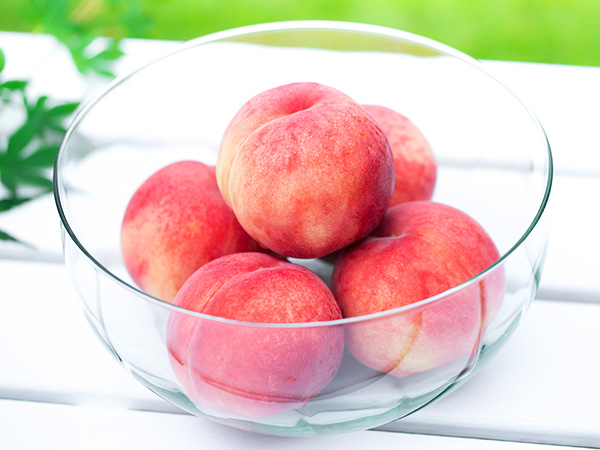
- Peaches
- Peach growers leave only carefully selected fruit on their trees to mature. This ensures that all the goodness goes into the remaining fruit to produce large, high-quality peaches. Peach orchards are typically located in basins surrounded by mountains. The temperature difference between the morning and evening and the strong summer sun help peaches to ripen and become sweeter. Only someone who has tasted one of these plump, beautifully round peaches, with their delicate color and juicy flesh that melts in the mouth, can truly appreciate how special they really are. The feeling of joy and delight inspired by their sweet scent when ripe is another of the charms of these peaches.
-
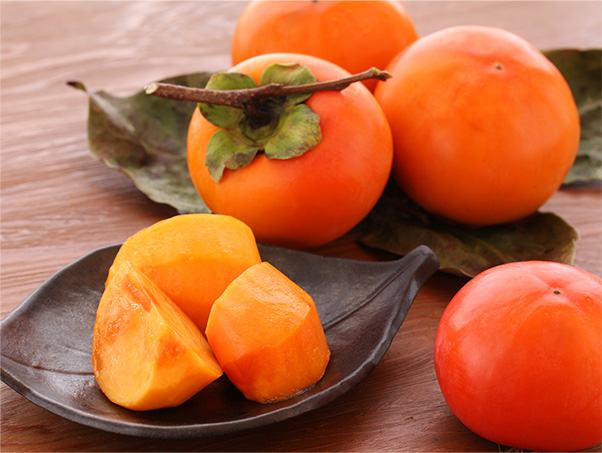
- Persimmons
- There are said to be 1,000 varieties of persimmon in Japan alone, because each variety will only grow in its native area. Well-known sweet varieties include Fuyu, Jiro, and Taishu, while Hiratanenashi and Tone Wase are common astringent varieties. Persimmons are generally characterized by their gentle sweetness, but the variety determines their texture, which can be soft, smooth, or crunchy.
-
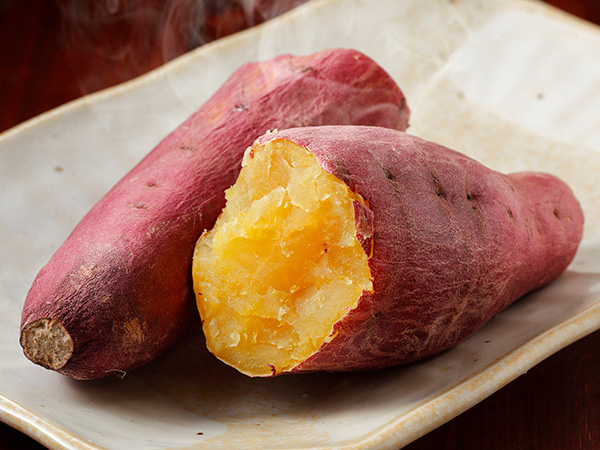
- Sweet Potatoes
- Baked, deep-fried in tempura batter, steamed, or eaten as a sweet snack, the sweet potato is a versatile, tasty vegetable. Among the array of varieties cultivated are the floury Beniazuma, the starchy, rich Beniharuka, and Silk Sweet. After harvesting in summer and autumn, they are stored for 1-3 months to allow their sweetness to develop, while their texture changes from floury to moist and starchy. Steamed and sun-dried sweet potato, known as hoshi-imo, has a more intense flavor with a higher nutritional value.


